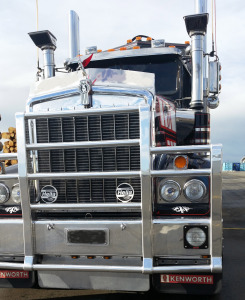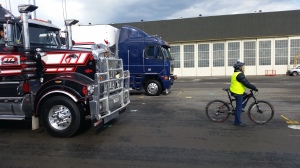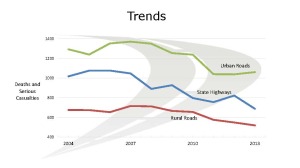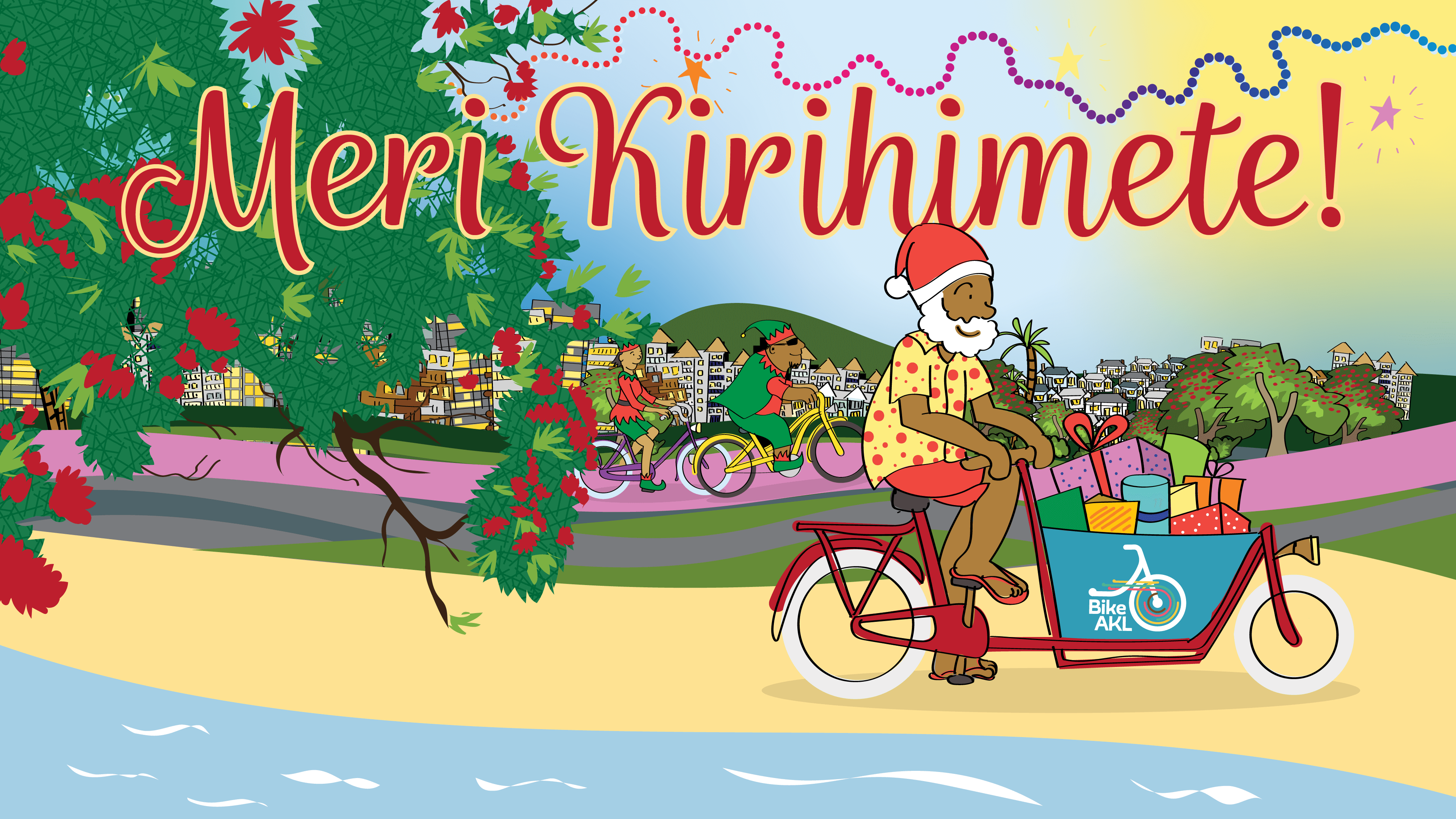
A guest post from our own Richard Barter.
The recent tragedies involving crashes between cyclists and trucks have created much controversy. There are few who would not struggle with the opening sentence in a Stuff article “A truck driver who this week ran over a cyclist has a previous conviction for careless driving in relation to a crash in which a cyclist was killed.”
At the same time the release of recommendations from the Cycle Safety Panel which included mandating passing distances unleashed a torrent “ONE News Facebook followers have weighed in on a new proposal to fine motorists for not giving cyclists enough space on the road.”
The more moderate Nelson Mail probably speaks for many in an article published recently.
No one likes to see new laws, and new ways for the police to gather revenue. However, with yet another cyclist killed in Christchurch on Monday, and a driver sentenced yesterday after a similar fatality in the same city earlier in the year, clearly something more needs to be done to help make cycling safer.
I repeat the concluding line:
clearly something more needs to be done to help make cycling safer.
There is much everyone agrees on, our roads are inadequate, heavy vehicles have significant blind spots, cyclists are vulnerable, congestion is increasing demand on a fixed amount of road space, it would be better if cyclists and motor vehicles were kept apart. Increasingly we are benefiting from solid New Zealand research that demonstrates for example the positive impact of providing access to bikes in schools, and the Societal costs and benefits of commuter bicycling and the economic benefits of cycling.
A number of initiatives around the country are having measureable impacts reducing the number of complaints against bus drivers, and bus bike crashes. These include the driver/cyclist awareness programmes run by The Wellington Regional Council and the Road User Workshops run by Cycling Advocates Network supported by the Safer Journeys initiatives from NZTA. A video about the programme Getting Home Safely was released today.

The recent central Government Elections saw nearly all parties commit to increased spending on cycling infrastructure in a manner that has largely depoliticised the issue. But it is when we start to get down to detailed budgets that the challenges begin and the same old confrontational statements come out. You know what they are; I am not going to repeat them here. The current amounts committed by Central and Local Government for cycling infrastructure are not in the foreseeable future sufficient to significantly reduce deaths and serious injuries. New heavy vehicles in New Zealand have more mirrors than in the past, and the new Blind Spot Assist developed by Mercedes-Benz for trucks is now a reality, but unless made mandatory, such technology will take time to be in widespread use, it costs.
Planners, the freight sector and public transport agencies understand that moving people and freight rather than single occupancy cars taking commuters to work has to be the priority to make our cities work. But making better use of road space is a vexed issue particularly in cities like Auckland with one of the highest rates of car ownership in the world, the expectation that cars can be parked on our road corridors is deeply entrenched.
So what to do! At the recent Traffinz 2014 conference Prof Ian Johnston of Monash University talked about Implementing a Safe Transport System. He shared research demonstrating how we are unaware of what is officially accepted as an ongoing level of road trauma, how we don’t want more control over our freedom to go where, when and how we like and that we aren’t prepared to accept paying the cost of reducing trauma. He said to bring about change we need to shift the focus of public education from crash consequences and personal risk (which have no credibility for low-level speeding ) to:
- publicising reductions in travel speeds and linking trauma reductions to them
- praising compliance
- demonstrating mismatch between some limits and roadside safety
 Another speaker at Traffinz, Colin Brodie Chief Advisor Safety New Zealand Transport Agency presented the new KiwiRAP Road Assessment Programme that will extend risk-targeting programmes and models to local urban roads, with a focus on mixed use arterials and areas posing particular risks for active road users, such as pedestrians and cyclists. His slide below shows a deterioration of safety on our urban roads.
Another speaker at Traffinz, Colin Brodie Chief Advisor Safety New Zealand Transport Agency presented the new KiwiRAP Road Assessment Programme that will extend risk-targeting programmes and models to local urban roads, with a focus on mixed use arterials and areas posing particular risks for active road users, such as pedestrians and cyclists. His slide below shows a deterioration of safety on our urban roads.
Finally from the Trafinz Conference, Samuel G. Charlton from the Traffic & Road Safety Research Group Waikato University spoke about the Safe System philosophy while is based on human-centred design; 1. People make mistakes, 2. People are vulnerable, 3. We need to share responsibility and 4. We need to strengthen all parts of the system.
Few would disagree, but it is the what to do that the Cycle Safety Panel in a well-considered and consulted on draft set of recommendations set out to tackle.
SAFE SYSTEM ENABLERS
- Safe provision for active modes is considered at all stages of road transport planning and investment and given higher priority status.
- Establish strong leadership and accountability practices for safe cycling
- Improve and expand cycling information collection and its use in policy and infrastructure development
SAFE ROADS AND ROADSIDES
- Take action to minimise conflict (crash risk) between people who cycle and other road users, especially heavy vehicles and at intersections – for instance, through:
- separation of high volume freight traffic and cyclists
- intersections, especially roundabouts, designed to be safe for people who cycle
- complete, connected urban cycling networks
- Provide safe on-road connections to the NZ Cycle Trail and other nationally significant cycle trails.
SAFE SPEEDS
- Manage motor vehicle speeds to minimise cycle crash risk and severity.
SAFE ROAD USE
- Mandate minimum passing distances for motor vehicles overtaking people on cycles – 1 metre where speed limits are below 60 km/h and 1.5 metres where speed limits are 60 km/h or over
- Increase support for school travel plans and cycle skills training
- Develop programmes to improve road user (both motorists and cyclists) behaviour and awareness
- Encourage corporate responsibility for employed drivers and contractors so that they practise safe behaviour towards cyclists.
- Refresh the legislative review of regulatory provisions relating to on-road cycling.
SAFER VEHICLES
- Investigate side under-run protection and other vehicle features to minimise the risk to cyclists from heavy vehicle crashes.
- Adopt improved standards for bicycle lights and the European Union standard for e-bikes.
In conclusion, drivers if you haven’t ridden a bicycle for some time find and experienced cyclist to take you for a ride, the road is a difference place from the seat of a bicycle. Cyclists if you are able, check out the road from the driver’s seat of a truck, it is an enlightening experience. In the meantime if we are all to get home safely we must learn to share the road.
- It is recommended that cyclists should ride 1m out for the curb and parked cars (in single file) to be seen and be predictable.
- Safe following distances (2 Second Rule for cars, 4 second for heavy vehicles) will encourage cyclists to find somewhere to safely allow following vehicles to pass.
- Safe passing: Allow a safe buffer of space between you and a person on a bike when passing – and wait for a clear space before passing on a narrow road.
- Cyclists: smile and wave to drivers if you hold them up and they pass you safely.
- Cyclists be aware that heavy vehicles have large blind spots, if a truck or bus is stopped at an intersection it is better to stay back and stay safe, avoid passing on the left.
Richard Barter



